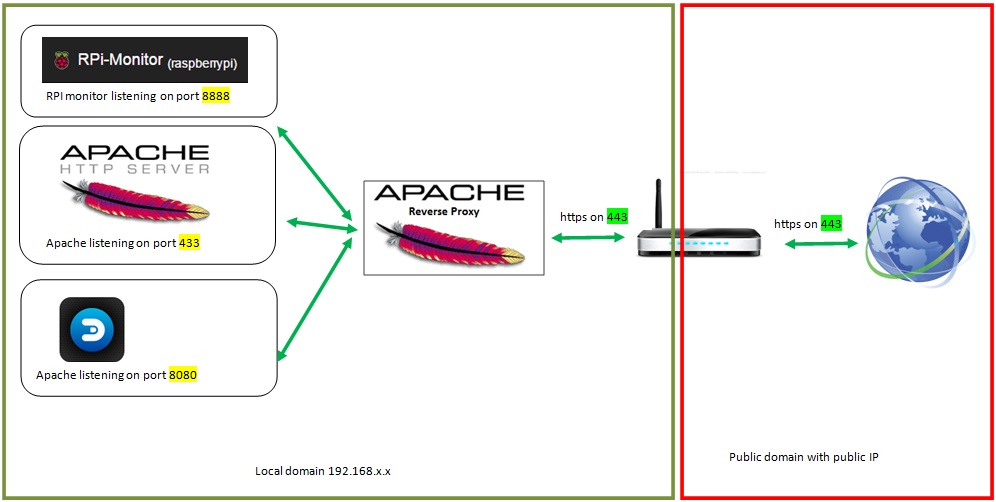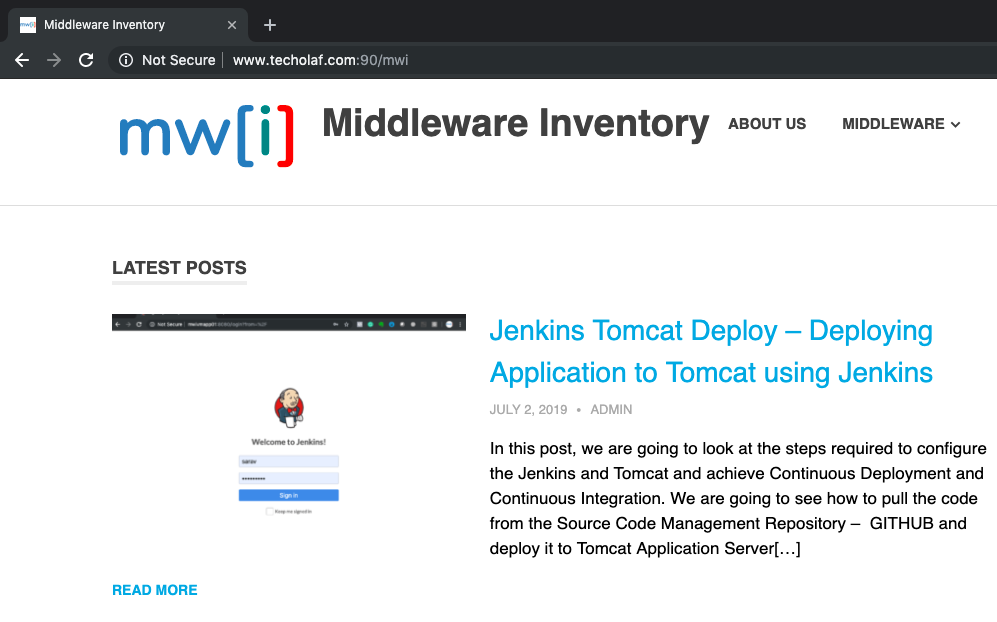In addition to being a 'basic' web server, and providing static and dynamic content to end-users, Apache httpd (as well as most other web servers) can also act as a reverse proxy server, also-known-as a 'gateway' server.
In such scenarios, httpd itself does not generate or host the data, but rather the content is obtained by one or several backend servers, which normally have no direct connection to the external network. As httpd receives a request from a client, the request itself is proxied to one of these backend servers, which then handles the request, generates the content and then sends this content back to httpd, which then generates the actual HTTP response back to the client.
Apache Http Proxy
There are numerous reasons for such an implementation, but generally the typical rationales are due to security, high-availability, load-balancing and centralized authentication/authorization. It is critical in these implementations that the layout, design and architecture of the backend infrastructure (those servers which actually handle the requests) are insulated and protected from the outside; as far as the client is concerned, the reverse proxy server is the sole source of all content.
Apache Http Server Reverse Proxy

A typical implementation is below:
Apache Http Proxypass
LoadModule proxymodule modules/modproxy.so LoadModule proxyhttpmodule modules/modproxyhttp.so For the Debian based systems use the following command to enable the Proxy module with Apache. Sudo a2enmod proxy 2. Configure Apache Virtual Hosts. Now will start working with virtual host. We are creating three virtual hosts as below. You can verify that the Apache HTTP Proxy service is running in the services.msc snap-in (look for ApacheHttpProxy). By default, the service is configured to start automatically. After the installation configure the Apache HTTP Proxy for desired functionality. Was this information helpful?
Apache Http Proxy Eset
Apache is a tried and tested HTTP server which comes with access to a very wide range of powerful extensions. Although it might not seem like the go-to choice in terms of running a reverse-proxy, system administrators who already depend on Apache for the available rich feature-set can also use it as a gateway to their application servers. Using HttpClient library, you can send a HTTP request using a proxy. Follow the steps given below − Step 1 - Create a HttpHost object Instantiate the HttpHost class of the org.apache.http package by passing a string parameter representing the name of the proxy host, (from which you need the requests to be sent) to its constructor.






